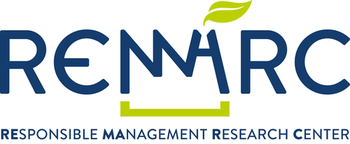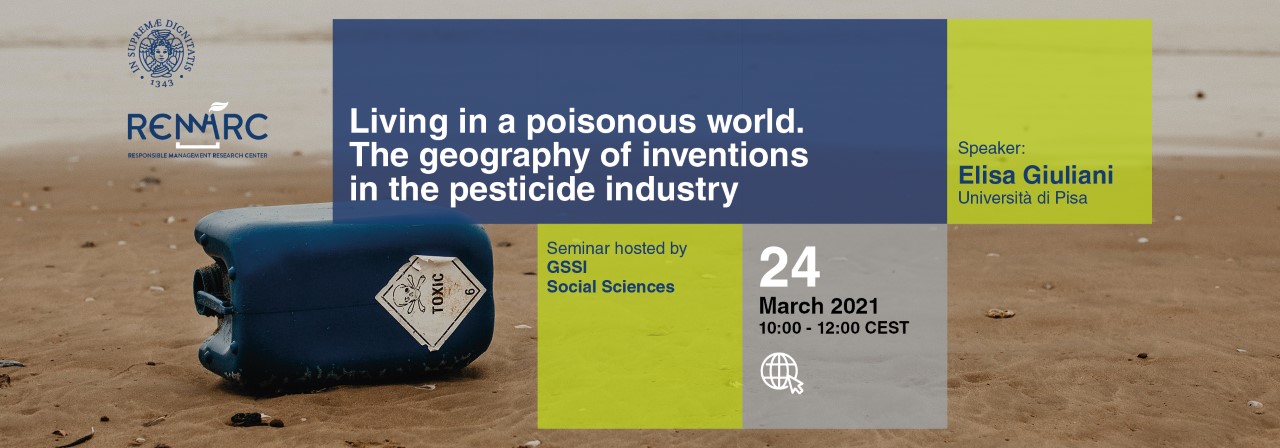Seminar “Living in a poisonous world. The geography of inventions in the pesticide industry”
Presenter: ELISA GIULIANI, University of Pisa
The virtual talk will be open to the public attendance and streamed via Zoom.
The seminar hosted by GSSI Social Sciences.
Abstract
In economic geography, we are used to consider innovation a driver of economic growth. However, the spread of some innovations can also have catastrophic consequences on society and the environment. Recently, Coad, Biggi, and Giuliani (2019) have provided examples of harmful innovations – from asbestos to DDT to lead petrol cars – and show the difficulty and longtime related to the process of banning contested technologies once they have become widespread despite evidence of their hazardous consequences for human health. One industry in which innovative activities are under the spotlight for their pernicious effects on the survival of the human species and its ecosystems is chemistry. We perform an analysis on the temporal geography of pesticides’ inventions. Our analysis covers an initial set of over 93,000 patent families in the NACE class 20.2 – “Manufacture of Pesticides and Other Agrochemical Products” which corresponds to the IPC classes A01N and A01P according to the Concordance IPC V8 – NACE Rev. 2 on the 3-digit level. These families include approximately 300,000 individual patents filed between 1951 and 2000. For each patent we geo-localized inventors, using the methodology proposed by Rassenfosse et al. (2019). Based on this search, we could retrieve inventors’ geographical information for 37,503 patent families between 1991 and 2017. We find that, over time, there is a changing geography of pesticide inventions. While originally pesticides used to be invented primarily in the US, Japan and Germany, now we observe a progressive spread of intellectual property right protection of pesticides in emerging economies in Asia (especially China) and Latin America. As compared to other high income countries, the US has retained its leadership in this field over time. We find that the US and China host most of the pesticides’ inventors worldwide (over the period 1991-2017 they account for 61% of the all the pesticides inventions worldwide). Next, we performed the same analysis focusing on a specific class of highly hazardous pesticides known as persistent organic pollutants (POPs), which include chemicals nowadays banned in most parts of the world including DDT. Our POP sample contains 1,382 patent families. We were able to match 519 patent families to their inventors’ geographical location. We find that US lost its leadership in inventions that use POPs over China, which became the top inventing country of POP-related pesticides after 2011. Finally, based on the evidence that California and Beijing are the two most relevant inventive hubs for pesticides in the US and China respectively, we selected a sample of their patents filed between 1991 and 2017 and assessed the evolution of their potential human and environmental toxicity over the same period. Toxicity is measured in terms of their potential to be carcinogenic, mutagenic, reprotoxic; toxic for the eco-systems and in terms of their biodegradability and persistence, and is measured using methods of computational toxicology described in Biggi et al. (2020).
For more info on the event see here.




